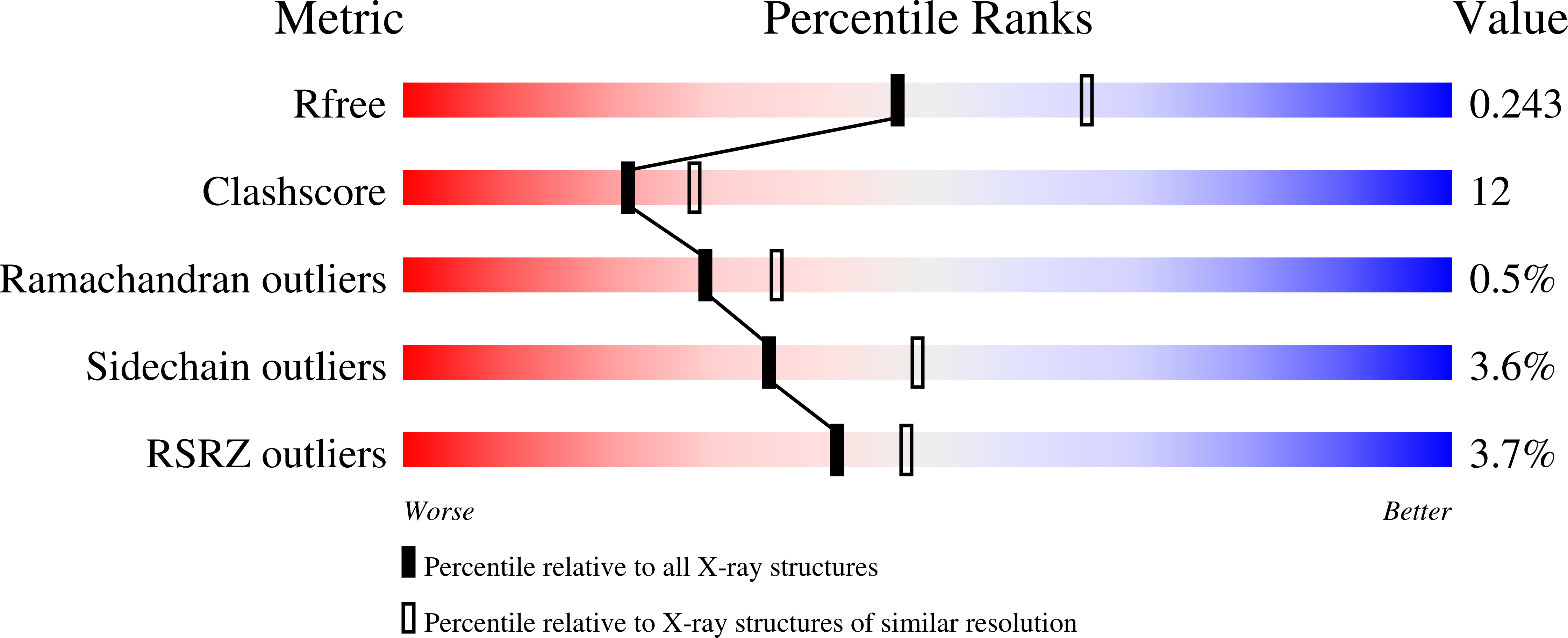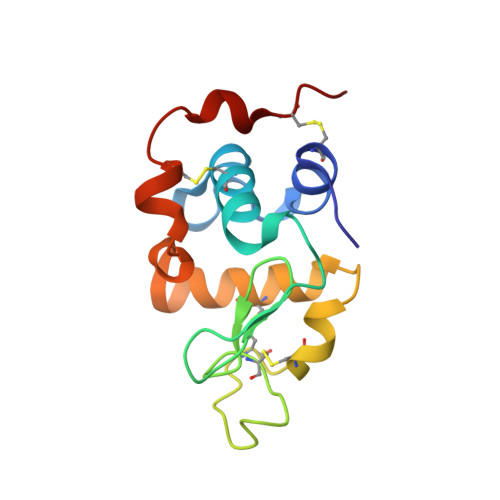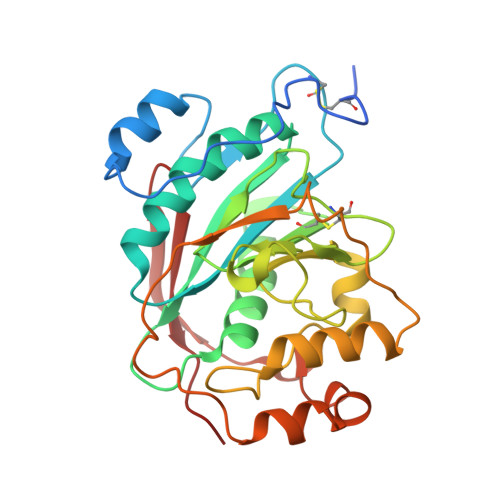The Role of Tryptophan 314 in the Conformational Changes of beta 1,4-Galactosyltransferase-I
Ramasamy, V., Ramakrishnan, B., Boeggeman, E., Qasba, P.K.(2003) J Mol Biol 331: 1065-1076
- PubMed: 12927542
- DOI: https://doi.org/10.1016/s0022-2836(03)00790-3
- Primary Citation of Related Structures:
1PZT, 1PZY - PubMed Abstract:
beta1,4-Galactosyltransferase-I (beta4Gal-T1) undergoes critical conformational changes upon substrate binding from an open conformation (conf-I) to the closed conformation (conf-II). This change involves two flexible loops: the small (residues 313-316) and the long loop (residues 345-365). Upon substrate binding, Trp314 in the small flexible loop moves towards the catalytic pocket and interacts with the donor and the acceptor substrates. For a better understanding of the role played by Trp314 in the conformational changes of beta4Gal-T1, we mutated it to Ala and carried out substrate-binding, proteolytic and crystallographic studies. The W314A mutation reduces the enzymatic activity, binding to substrates and to the modifier protein, alpha-lactalbumin (LA), by over 99%. The limited proteolysis with Glu-C or Lys-C proteases shows differences in the rate of cleavage of the long loop of the wild-type and mutant W314A, indicating conformational differences in the region between the two proteins. Without substrate, the mutant crystallizes in a conformation (conf-I') (1.9A resolution crystal structure), that is not identical with, but close to an open conformation (conf-I), whereas its complex with the substrates and alpha-lactalbumin, crystallizes in a conformation (2.3A resolution crystal structure) that is identical with the closed conformation (conf-II). This study shows the crucial role Trp314 plays in the conformational state of the long loop, in the binding of substrates and in the catalytic mechanism of the enzyme.
Organizational Affiliation:
Structural Glycobiology Section, LECB, CCR, NCI-Frederick, Building 469, Room 221, 21702, Frederick, MD, USA.



















